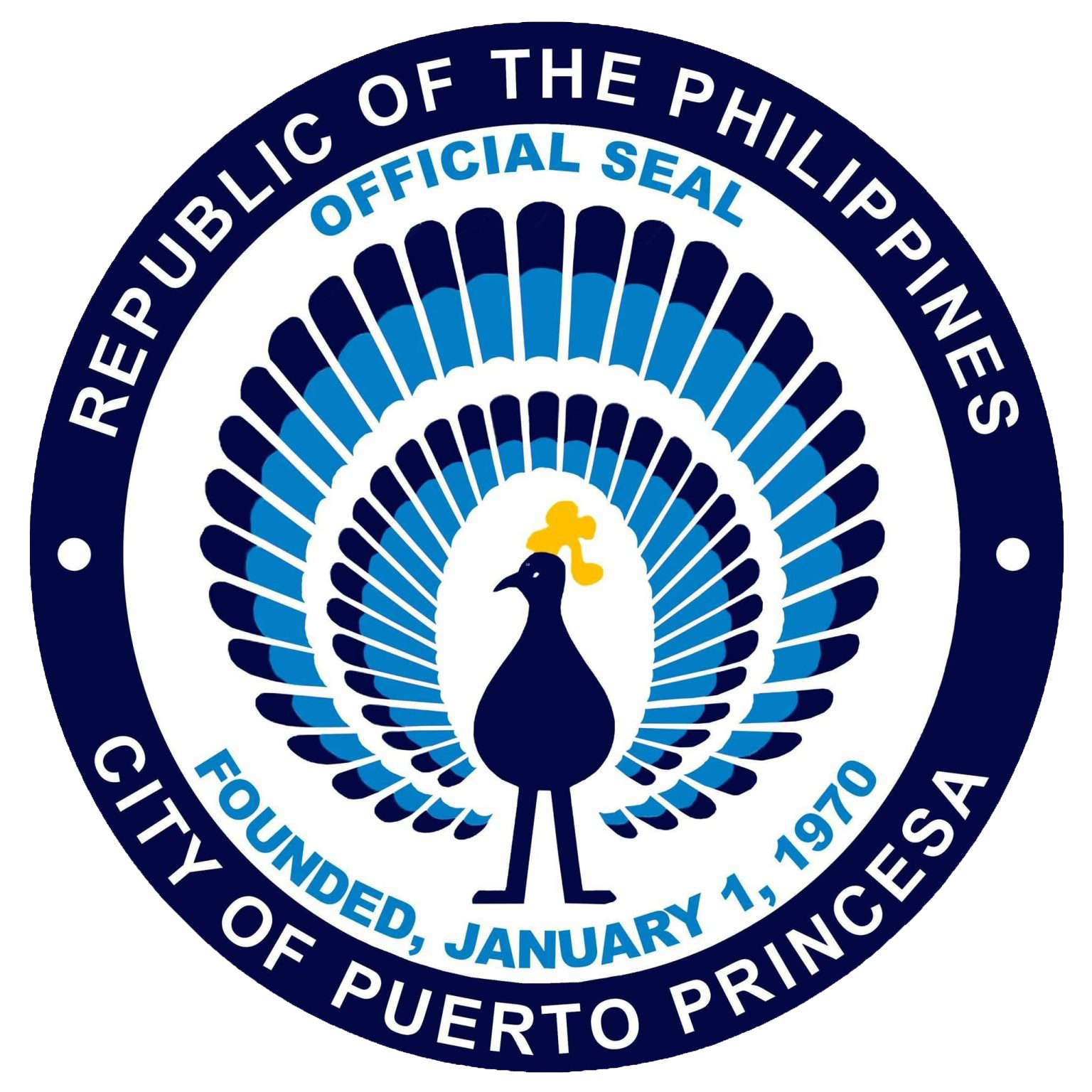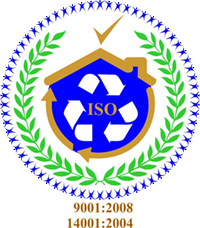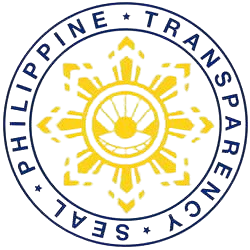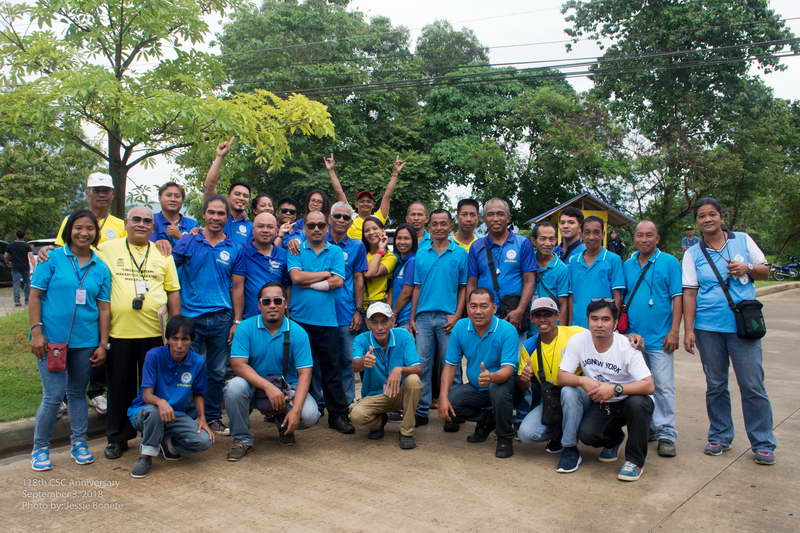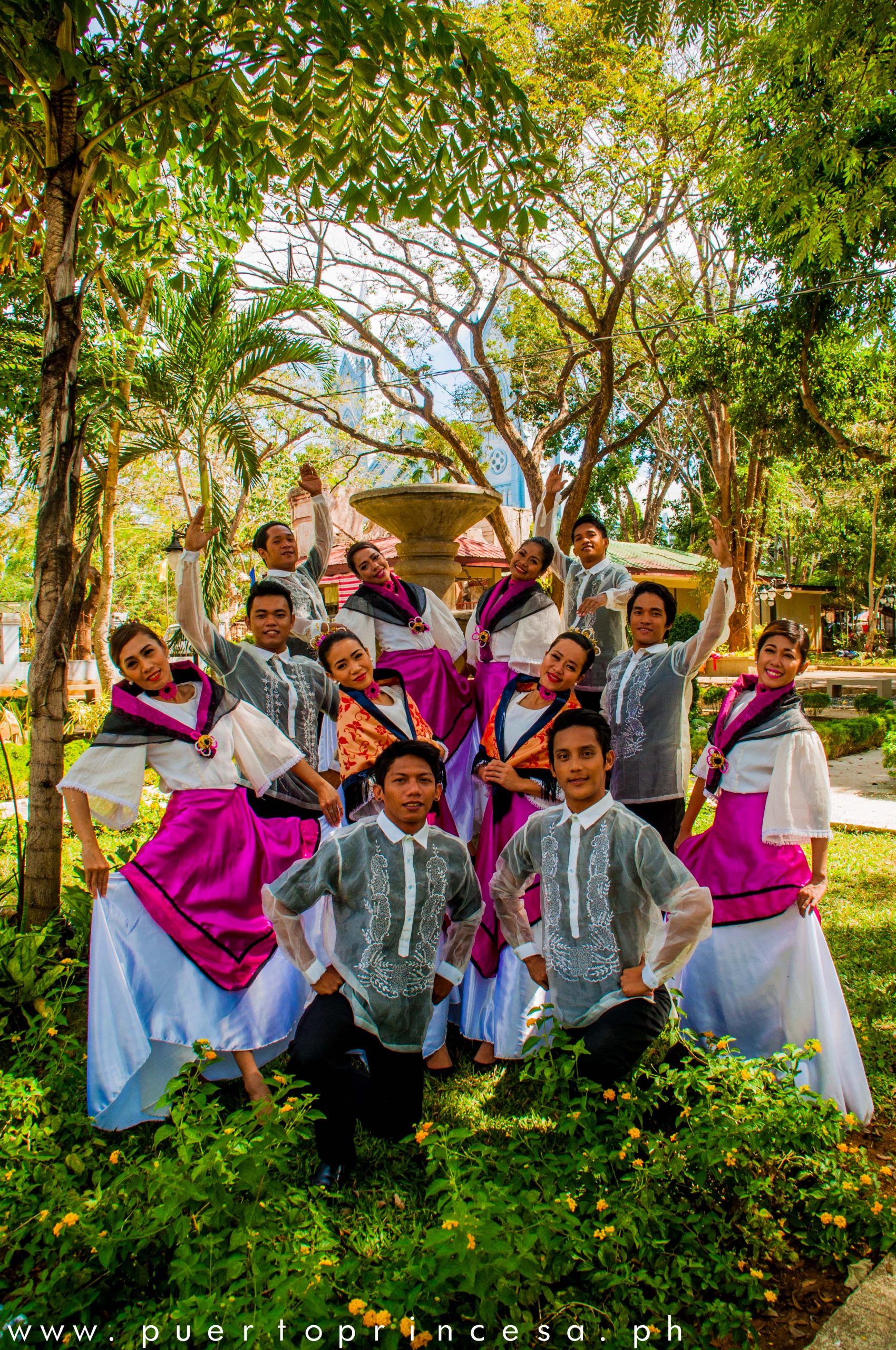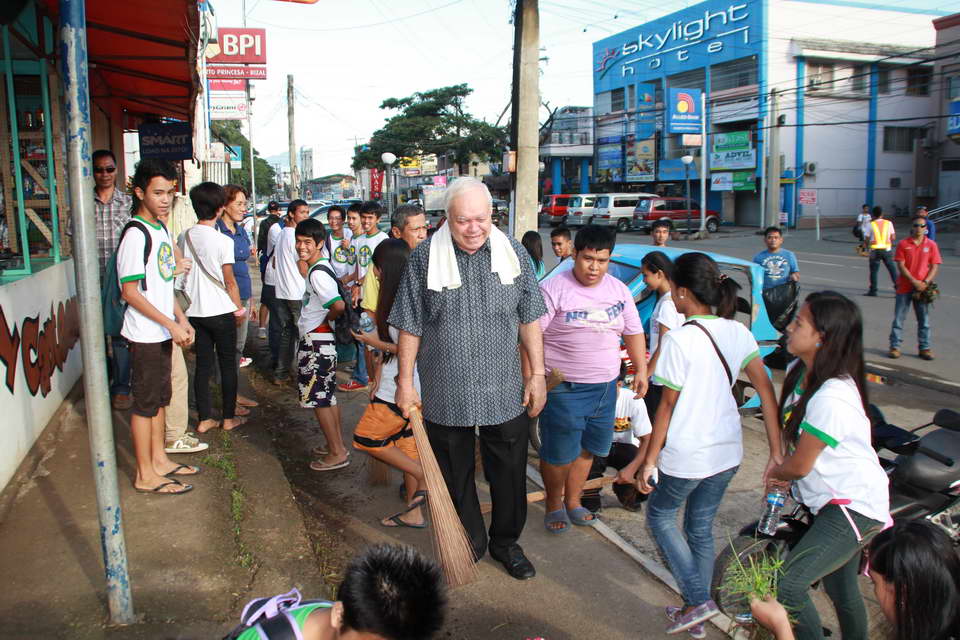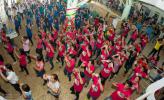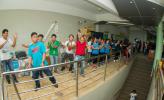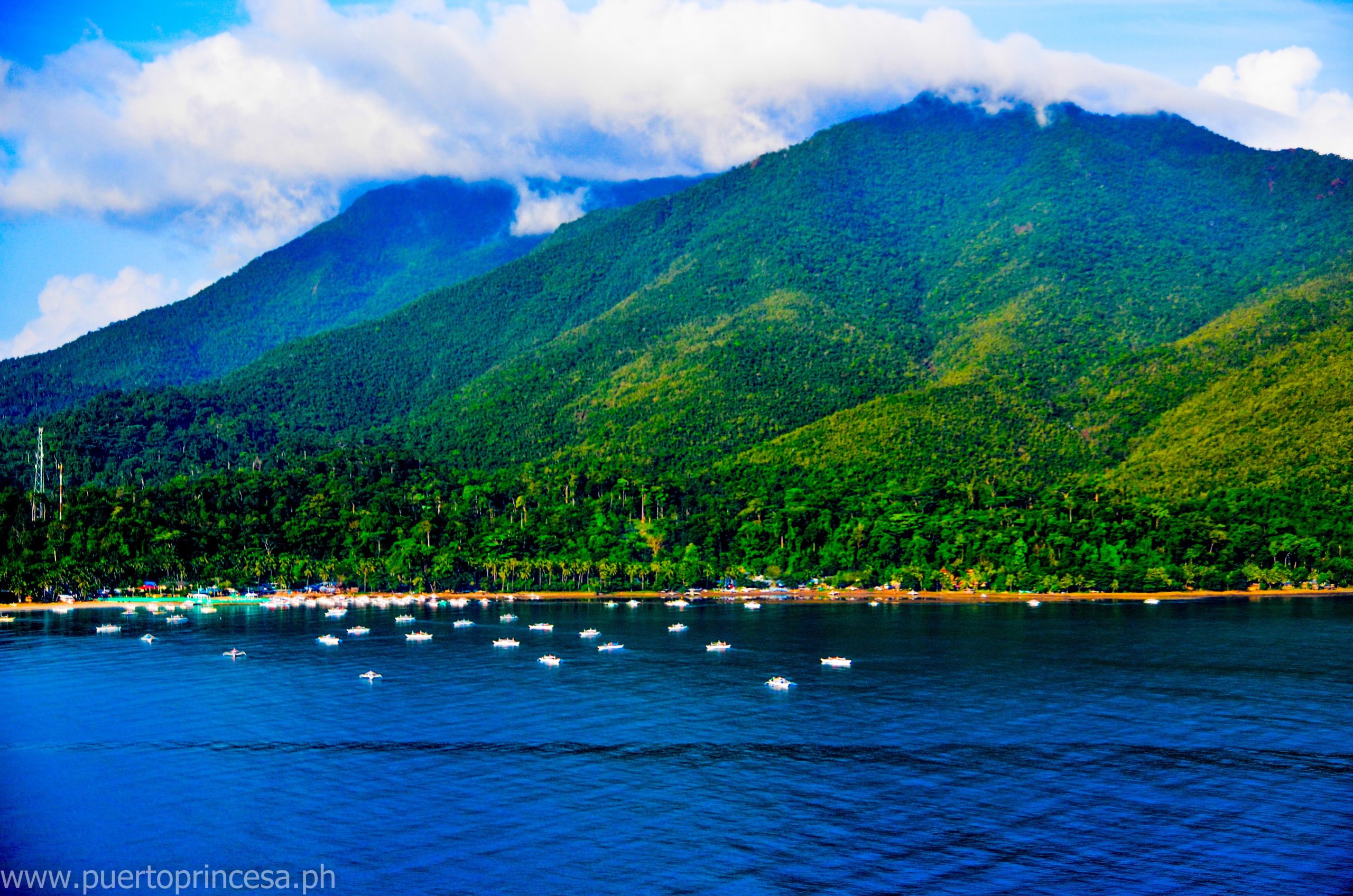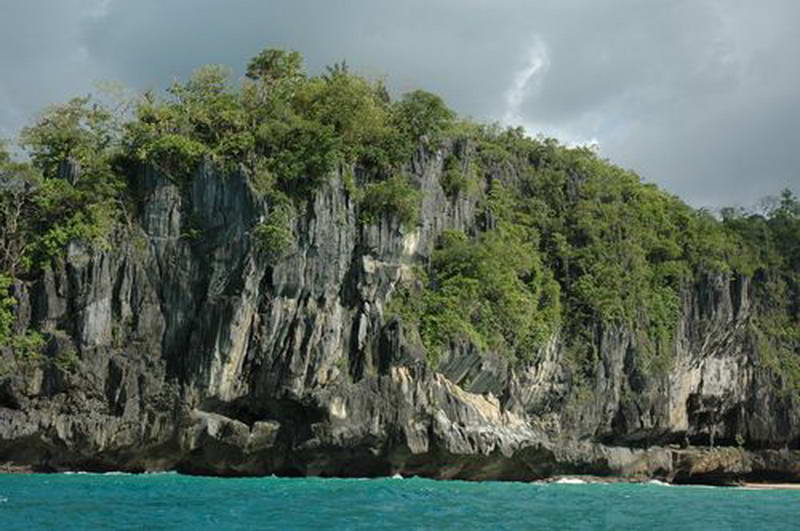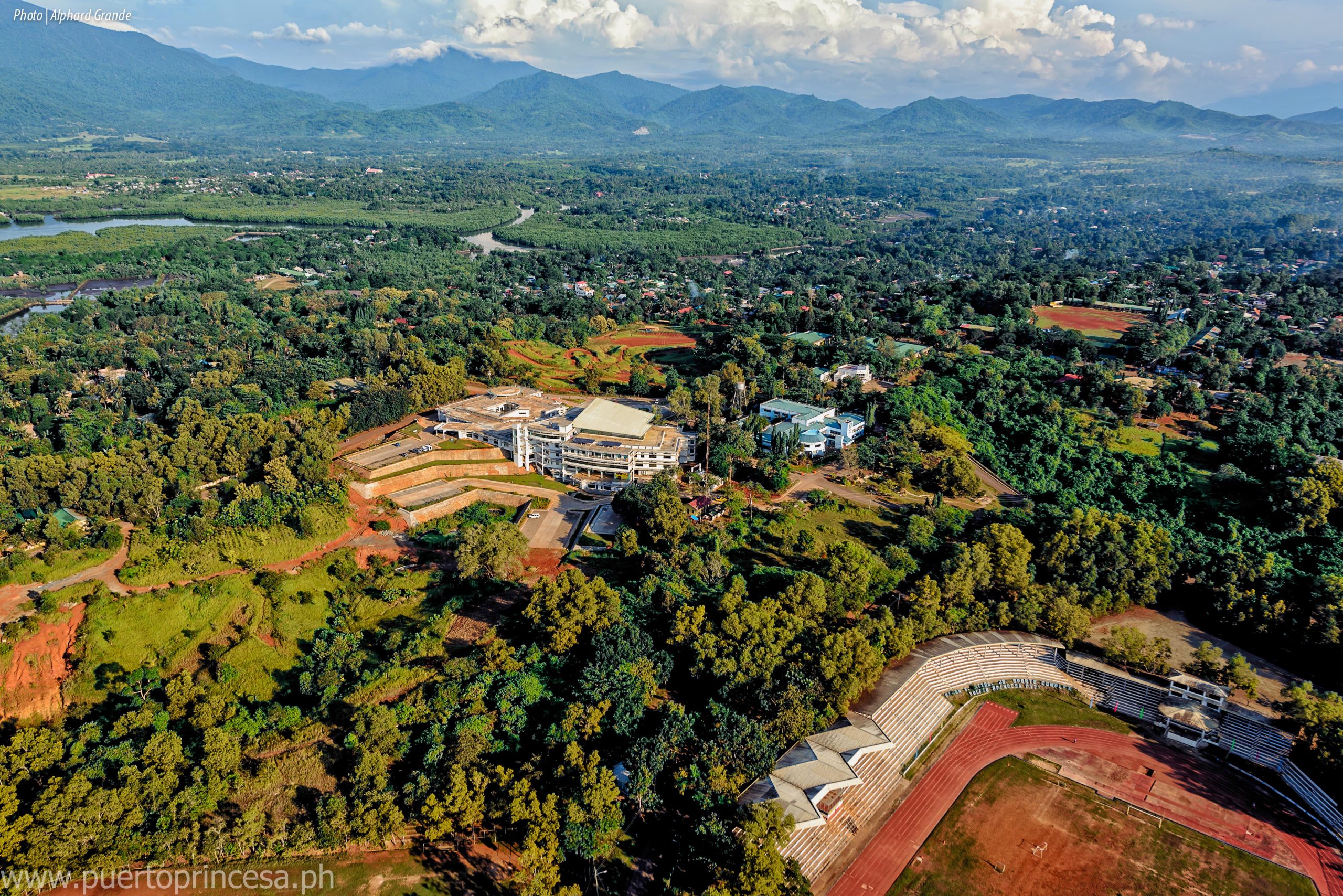WAR AND RECONSTRUCTION
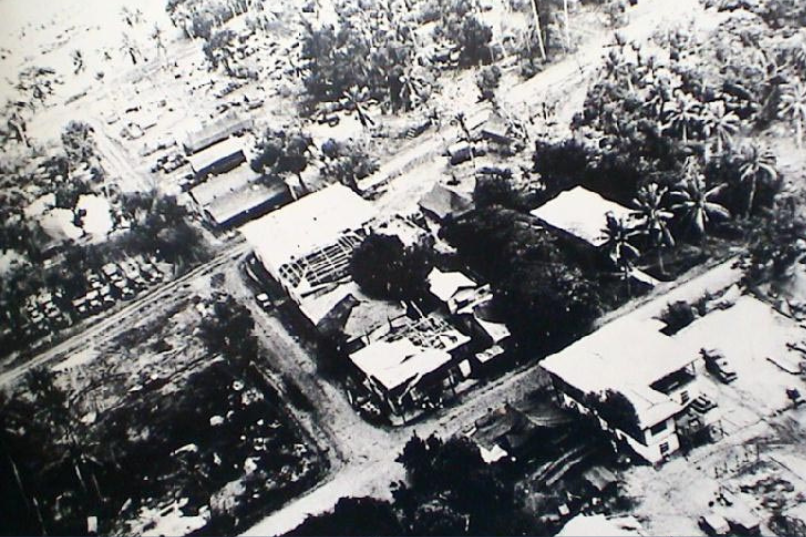
War is the scourge of man. It is organized armed conflict between the groups of people or states. War is not found elsewhere in the animal kingdom. Since recorded history began, man has been involved in hostility, for different aims: power, territory, wealth, ideological domination, security and independence. Until modern times, most wars were fought with limited means for limited aims, but modern weapons of mass destruction and total warfare can eliminate whole populations and endanger the survival of the human race. (Robert A. Rosebaum, Editor in Chief Desk Encyclopedia. New Jersey: New American Library, 1984: 1248). Evidently what Puerto Princesa is today attests to this reality of its strength in character, endurance, resilience and perseverance for having survived the Japanese occupation and other trials that came its way to purposeful and significant development.
Immediately ater the outbreak of World War II, there were 16 Japanese civilians in Puerto Princesa who were picked up and disappeared sometime in April 1942 somewhere in the vicinity of kilometer 37 of the national highway. In Coron, Lieutenant Baldomero Garcia of the Philippine Constabulary rounded up 122 Japanese civilians and captured two launches. A number of Palaweños were called to active duty. These reservists of the Philippine Army were in the battlefields in Bataan and experienced the Death March. Some of the veterans of Bataan returned to Palawan: Regional Trial Judge Jose P. Rodriguez, Provincial Board Member Andres Baaco and City Councilor Felix Rafols, Jr. to cite a few.
ELIZABETH CLARK ALBA WRITES
Usually ushered in by the onset of the nostalgic northeasterly breeze, December was always a favorite month, especially among the youngsters looking forward to a string of joyous events. In pre-war years, Time dragged its feet ever so slowly. A year seemed like forever- and celebrations were few and far between. 0So on that morning of December 8, 1941, most everybody in this sparsely populated town had turned up at the Rizal Park. It was the Feast of the Immaculate Conception and everyone was in a festive mood – ball games had begun, bicycle races were to be run; there was the exciting hitting of the pot and the climbing of the greased pole. That day, I was among the crowd of spectators in the park (those were the cherished years when children could be let loose in crowds or in the streets and parents had no fear from pickpockets, hold-uppers, snatchers or tricycles).
Four days short of my birthday, war was farthest from my thoughts – that was when news of the attack on Pearl Harbor came over the radio, it implied nothing. I didn’t even know where, much less what Pearl Harbor was. But when the bombing of Manila and Davao soon followed, fiasco ensued. It seemed like everybody panicked and started running in all directions. I ran home and found my mother and sister rushing out of the house. I joined them and found ourselves among a maze of people in near – hysteria. If the Japanese had strafed Puerto that moment, there would have been carnage on the streets. No one was prepared for this! When sanity returned, evacuation began. We rushed to my father in Canigaran – about seven kilometers from town and stayed there until our fears subsided. After a couple of days, we returned to Puerto especially since my sister was due to be delivered of her baby any time and needed to be near a doctor.
A somber Christmas came and went – spent in fear and darkness as blackouts were imposed. Then in December 31, assisted by Dr. Higinio A. Mendoza, Sr., my sister gave birth to a baby girl. That New Year’s Eve was just as dark, quiet and melancholy. The next day, January 1, 1942, the morning started to loom like another uneventful day. Towards mid-morning, I curled up with my Grimm’s Fairy Tales Book and was enjoying a story when I heard the drone of airplanes – faint at first but definitely coming closer.
PEOPLE OF WAR AND RECONSTRUCTION
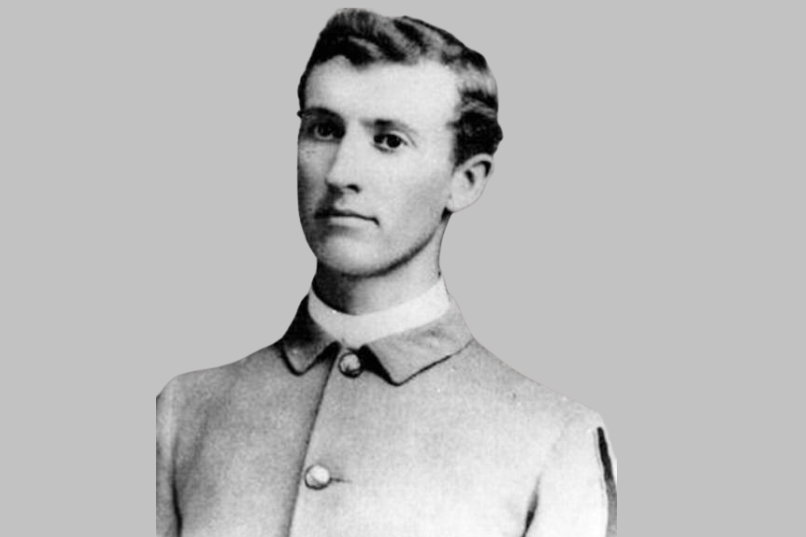
JOHN TOMPSON CLARK
John Tompson Clark was born on September 9, 1874 in Perry Pike County, Illinois. His parents were Charles Folsom Clark and Aliva Read, whose ancestral lineage came from England. His maternal great grandfather, Robert Read was born in Norfolk, England while wife Susannah Callows was born in Yorkshire, England.
His paternal grandfather, Benjamin Clark, served in the English Army in 1812. Robert Read and wife Susannah traveled from England in a slow sailboat arriving in Baltimore, Maryland on July 4, 1835. They crossed the Allegheny Mountain in a stagecoach via Virginia, Cincinnati and Missouri, arriving at Perry, Illinois (then called Booneville after Daniel Boone) that same year. Their son, John C. Read was born in American soil. John married Lucy Brower, a Dutch girl from New York (once called Amsterdam). Their first child was Aliva.
When John T. Clark was old enough to leave home, he went to Dodge City in Kansas. He grew up there and took up studies in the A and M College of Oklahoma where he obtained a degree in General Science in 1898.
ALIVA READ CLARK
Then he was assigned as Secretary Treasurer of Palawan on October 16, 1906. He wrote a letter to a cousin, “I have been sent to this Isla de Paragua for an indefinite period. It is not a bad island just like Mindanao, except that it has fewer people, but it is lonesome, only one boat a month and there is not much work but lots of traveling about to get to different towns. I have just finished a trip of 3,000 miles in a row boat and it is tiresome.” He added, “They raised my salary or I would not have taken this place.” He continued that he was “sailing again but by steamer this time.”
In 1910 he again made a trip to the United States. He came back in August that same year on board the S.S. Manuel Calvo. Palawan, having no roads in those times, he had to do his travelin by sailboat along the coastal towns of the mainland. In so doing, he acquired a lot of friends and experienced real Palaweño hospitality. One of those who according to him welcomed him warmly even if he arrived in the middle of the night in Tumarbong, was Jeku Hara, a Japanese. John said, “he’d open the house to me, make me some hot tea and serve me warm food even in the wee hours of the morning.” On October 25, 1911, John married a local girl, Concepcion Miraflores Palanca. She was born on July 16, 1896 in Inagawan, Puerto Princesa. The couple was blessed with nine children: Esperanza, Alfredo, Trinidad, Daniel, Patricia, Aliva, Virginia, Elizabeth and Jackie.
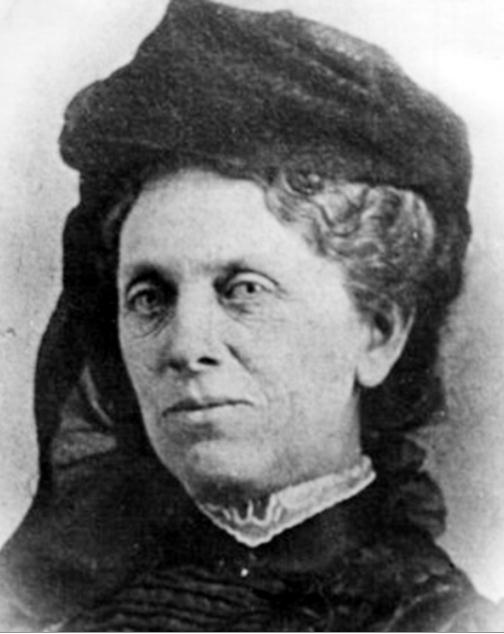
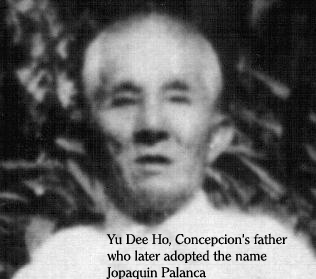
YU DE HOO – CONCEPTION FATHER
Concepcion’s mother, Antonia Miraflores descended from the Mondragon and Miraflores families of Cuyo, Palawan. Her father, Yu Dee Hu was from Amoy, China but later adopted the Christian name Joaquin Palanca.
In February 1914, John T. Clark resigned from government service. He concentrated in planting coconuts in his land in Canigaran. His mode of transportation to and from the seven kilometers stretch of narrow and rocky road was by horseback, “Nelly.”
In 1934, he got his first car just in time for “Nelly” to retire due to old age. John Tompson Clark passed away on October 5, 1942 in their evacuation place called “Tarao” which he likes to call “Castle Rock.”
JAPANESE OCCUPIED TERRITORY
The Provincial Gopvernment of Free Palawan during the Japanese occupation was an extension of the Commonwealth of the Philippines. It was established on January 1, 1942, after a conference of all provincial officials and leading citizens of Palawan. The provincial officials were: Governor, Gaudencio E. Abordo; Treasurer Pedro Cecilia; Auditor, Angel Paguia; Health Officer, Dr. Nestor Matro; Sheriff, Gregorio Quicho; Clerk of Court, Emilio Decolongon; Superintendent of Schools, Gaudencio Vega; Fiscal Cordova and others. The seat of government was moved to Aborlan then to Mentes, to Tandayag and two months later to Buenavista. Except for Aborlan, all other places were barrios of Puerto Princesa. For more efficient and effective administration of the affairs of government, Deputy Governors were designated: Jacinto Alli for northern Palawan and Jose Abid for Cuyo and Agutaya, while southern Palawan was directly under Governor Abordo. The areas under the Provincial Government of Free Palawan were all municipalities of Palawan, except, Coron which was garrisoned on May 2, 1942 to secure the manganese mines at Singay and Carmelita and Puerto Princesa. On January 1,1942, eight Japanese planes bombed Puerto Princesa but did not land troops until May 18, 1942. Later, Taytay, Araceli and Balabac were garrisoned by the Japanese Imperial Armed Forces.
Printing of Scrips. The disappearance of the “genuine money” which was in circulation before the war, forced the Free Palawan Government to print scrip (a certificate of indebtedness issued as currency, as by a local government without funds). The scrip, printed in several denominations was legal for all intents and purposes. President Manuel L. Quezon through General Manuel A. Roxas authorized the printing of scrip. The scrips were mimeographed on whatever kind of paper that was then available. These were signed personally by the Governor, the Provincial Treasurer and Provincial Auditor. The scrips were used to pay the employees, soldiers and other needs.
MUNICIPAL PRESIDENTS DURING THE JAPANESE OCCUPATION
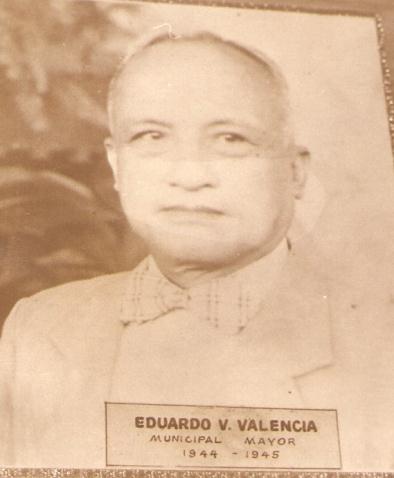
EDUARDO V. VALENCIA
President Jose P. Laurel appointed Eduardo Valencia, Municipal President in place of Teodoro Malate on July 3, 1944. He served until February 4, 1945, just before the landing of the American Liberation Forces on February 28, 1945. Eduardo Valencia was a dedicated public servant who served his constituents with unreserved dedication as shown by strong concern for the safety of the civilians from the hands of the Japanese soldiers. This earned him the distinction for an appointment as Chief Deputy Assessor and later as member of the Provincial Board. He was the Superintendent of the Non-Christian Tribes for Palawan when President Laurel appointed him Municipal President of Puerto Princesa. He was later reappointed to the same position until his retirement in 1952. While the enemy had been dislodged, a new threat for survival emerged even before the local government was recognized. That’s winning peace! From the ruins and ashes of war, a new social order emerged, the concept of “quick rich” through such nefarious smuggling of goods, drugs and even Chinese nationals. These activities were grouped into one term, graft and corruption, a social disease which up to the present has plagued not only the government but the private sector as well. As often as said in whispers, “there are no takers if there are no givers or vice-versa”. Puerto Princesa was not spared the effects of “quick rich” activities. In fact, Puerto Princesa was once a hotbed of smuggling, scams, and the buy and sell of surplus property.
DONATO MANGA
Donato Manga was born to Eusebio Manga and Paula Novalta of Cuyo, Palawan, on February 10, 1892. He hardly had any formal education. He left school a day after classes opened, because he was punished by his teacher, who caught him playing marbles behind the school building with some of his classmates after class. He was terribly hurt when his teacher knocked their heads together. He fled out of fear and never returned to school. His family moved to Puerto Princesa. At an early age of an adolescent, he stowed away in a boat to Manila where he worked in a motor launch. Later, he left for Hawaii to work in a sugar plantation. He lived with Justa Madama while working in Hawaii. When the work in the plantation stopped, they returned to Manila. However, Justa left when Donato returned to Puerto Princesa. Upon counsel of his mother, he returned to Manila and married Justa. Then they came back to Puerto Princesa. The couple was blessed with three children: Caludio, Heracleo and Marieta. His strong personality earned him the appointment of Chief of Police of Puerto Princesa. After a tour of duty as Chief of Police, Governor Anastacio Manalo placed him overseer of his coconut plantation in Tandayag. After clearing the forest and having planted it wit coconuts, he also developed his own homestead in Maruyugon. Donato Manga ran for re-election as Municipal Mayor in 1951, but he lost to Arturo Magay. But in the election of 1955, Manga was elected. He assumed office in January 1956. He was not able to finish his term as Municipal Mayor because he died of lung cancer on December 7, 1957.
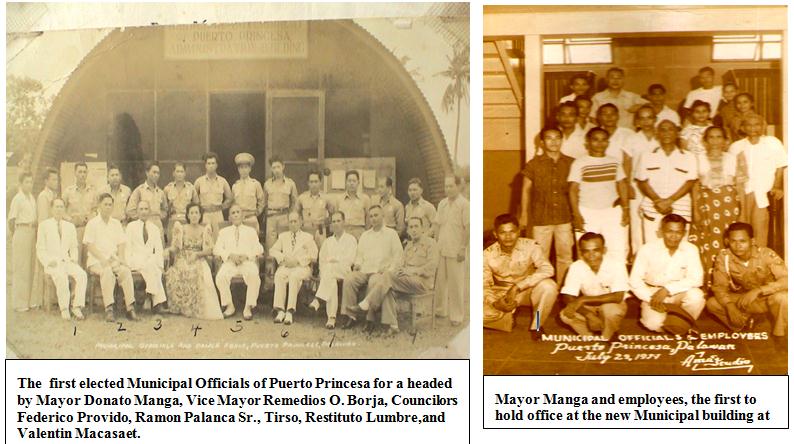

ARTURO MAGAY
Arturo Magay assumed the position as Municipal Mayor of Puerto Princesa on January 1, 1952. He was born in Iwahig Penal Colony to Agaton Magay and Soledad de los Reyes. His brothers and sisters were: Jacinto, Dominica, Miguel, Albino, Eduardo, Victoriano, Adela, Flora and Daniel. His parents were religious and taught them true love and service to God and fellowmen. They were either members of the church choir or church helpers. Arturo and his family saw the worst of human sufferings during World War II. When they heard that the Japanese bombed Pearl Harbor, the people were trained to always keep their gas mask ready to protect them from breathing in the poisonous fumes. They put off all the lights at night during raids. On December 8, 1941 during the La Purisima Concepcion Holy Mass, the Japanese warplanes sprayed bullets at the barracks and the plaza and bored a hole on the town’s water tank. It happened again on New Year’s Day of 1942.
Since then, the people abandoned the town. Some went north others south. Arturo’s family retreated into the wilderness in Tagburos. But the Japanese killed their father and arrested the family. Except for their experiences during the war, none was obtained of the records of Municipal Mayor Arturo Magay. He was succeeded by Donato Manga as Municipal Mayor in 1956.
ZOILO JALANDONI
Vice-Mayor Zoilo Jalandoni served the remaining term of Mayor Donato Manga which ended in December 1959. Briefly, he was born on June 27, 1916 in Jagna, Bohol where he finished his elementary education. At age 16, he worked his way through high school in Tagbilaran. He was inducted into the Army and was sent to the School for Commissioned Officers and graduated with the rank of First Lieutenant. In 1940, he was sent by Governor Agustin Caseñas of Bohol to Puerto Princesa to open the Caseñas Bus Transportation and the Palawan Electric Company, He managed both companies.
When World War II broke, he was called to active duty by the Army and saw action in Bataan. Meanwhile the Japanese took over the transportation and electric power companies he managed. When he was released from the concentration camp, he returned to Puerto Princesa and resumed management of the two companies which were abandoned by the Japanese.
In 1948, he started his political career. He joined the Liberal Party and ran for Councilor then Vice-Mayor. He served from December 7, 1957 (the unfinished term of Mayor Manga) until December 31, 1959. He later died of a heart attack.
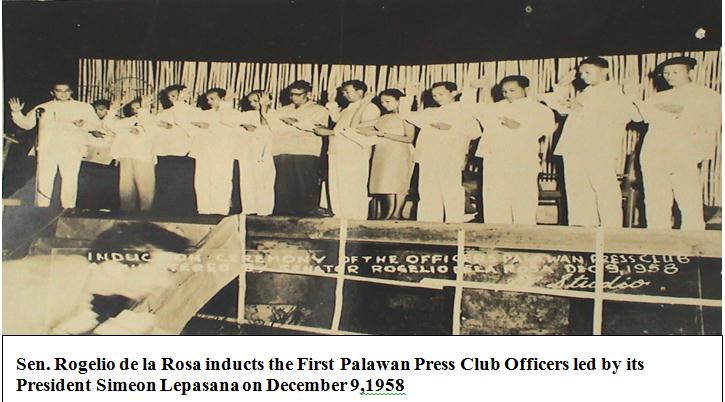
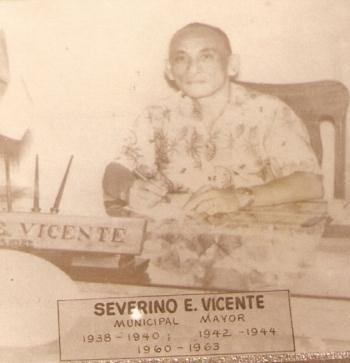
SEVERINO E. VICENTE
Severino E. Vicente succeeded Mayor Jalandoni on January 1, 1960 serving for two terms, ending on December 31, 1963. After his term Municipal Mayor Severino E. Vicente served as Provincial Secretary from January 1971 to August 31, 1974. Then he became Barangay Captain of Salvacion from 1981 to 1987.
LOPE NADAYAO
Lope Nadayao succeeded Mayor Vicente on January 1, 1964 and served as Municipal Mayor until December 31, 1968.
FELIBERTO R. OLIVEROS
Feliberto Rodriguez Oliveros, Jr. was duly elected Municipal Mayor of Puerto Princesa on January 1, 1968. But his services as Municipal Mayor were interrupted on December 31, 1969, when the Municipality of Puerto Princesa was converted into a component City on January 1, 1970. He continued to serve as the First City Mayor of Puerto Princesa until March 2, 1986, after the Presidential Snap Election on January 7, 1986. Feliberto R. Oliveros, Jr. was born on November 17, 1937 in Manila. His parents were Feliberto Oliveros of Cuyo and Leonila Rodriguez of Coron, Palawan. He married Rafaelita Silano. They have two sons Victor and Feliberto III, a Councilor of the City of Puerto Princesa.
Bert, as he is fondly called by friends, completed his elementary and secondary education at the Ateneo de Manila. He took courses in agriculture at the University of the Philippines, Los Baños, Laguna. He, however, shifted to mining engineering where he graduated with the Bachelor of Science in Mining Engineering at the Mapua Institute of Technology, Manila. He was the Editor-in-Chief of The Builder and the MIT annual the Cardinal and God. He took courses leading to the degree of Master in Public Administration at the Palawan State College now Palawan State University.
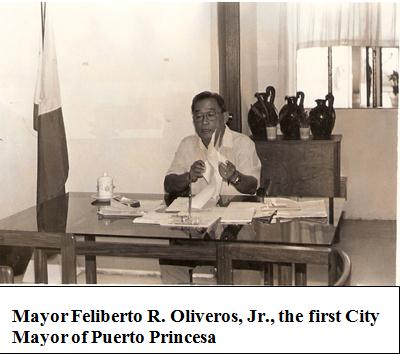
He first sought employment at the Palawan Quicksilver Mines, Ind., at Sta Lourdes, Puerto Princesa and at the same time part-time instructor at the Holy Trinity College, Puerto Princesa.
He ventured into politics in 1964 with the vision “to improve the quality of life of the people and develop them into self-reliant citizens”. He was elected Vice-Mayor and in 1968 elected Mayor and served as the first City Mayor in 1970.
Some of his significant achievements were: established the first Rural High School in Barangay Maruyugon; reclassification of the City from fourth to first class; established the Barangay Mangingisda Settlement Project, which later became two barangays: Luzviminda and Mangingisda; worked for the upgrading of the airport and seaport; constructed the new City Hall Building; funded from local funds the construction of the first waterworks system at Barangay San Rafael; construction of the first irrigation system serving the northern barangays; worked for the increase of Bureau of Internal Revenue allotments intended for the City of Puerto Princesa under the 60-30-10 (population-land area- equal sharing) scheme which made possible the passage of legislation for the uniform application nation-wide;

Palawan Long Range Development Plan (1976)
It triggered the reconstruction of Puerto Princesa with the City’s participation in its formulation.
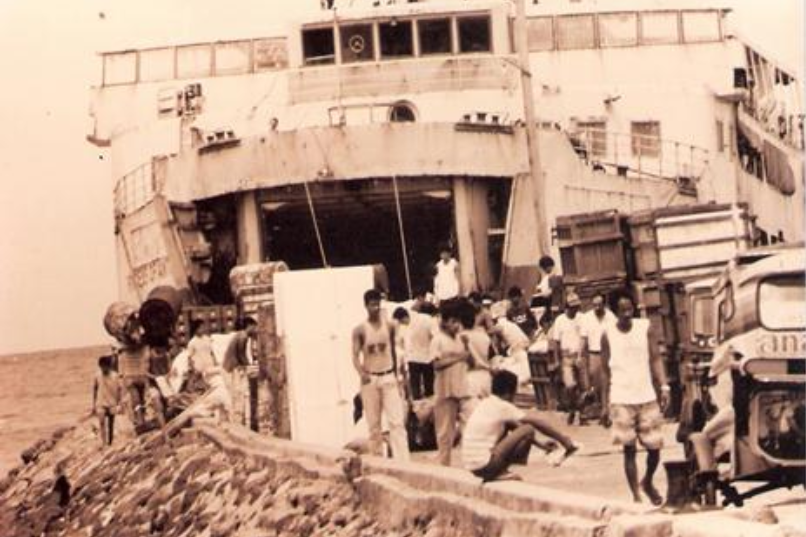
Palawan Integrated Area Development Project (1978)
This book, THE PUERTO PRINCESA STORY, was conceived with the thought to present an enlightened knowledge.
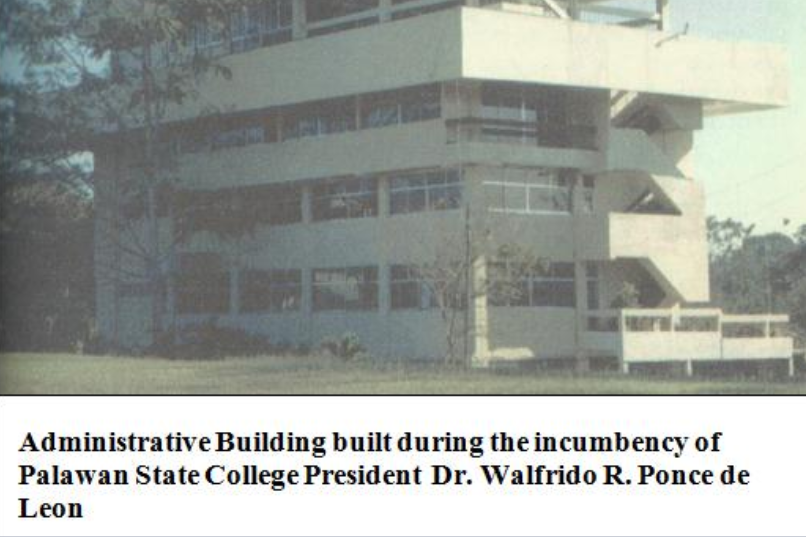
Palawan State University Year 1972
It was built in 1976 in a 20-hectare forested hill inBarangayTiniguiban, six kilometers from the City proper, donated by the City Government.
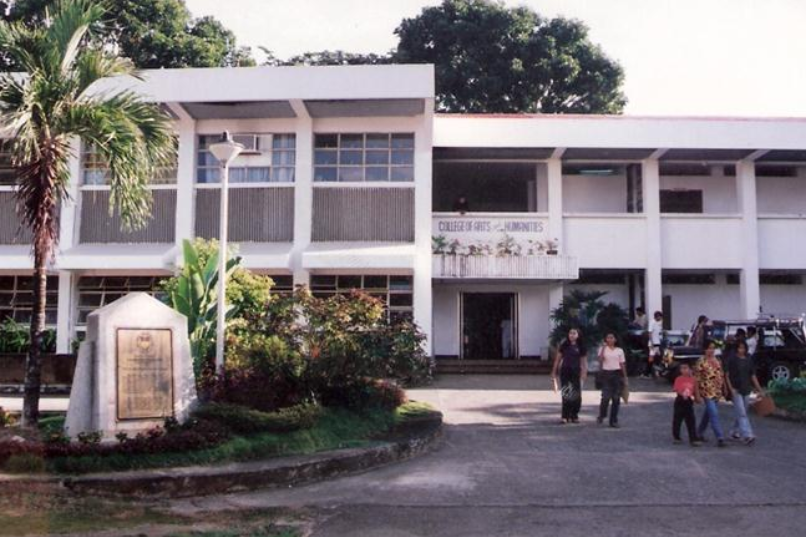
Palawan Teachers College
It however, took Dr. Walfrido Rafols Ponce de Leon, the Founding President seven years
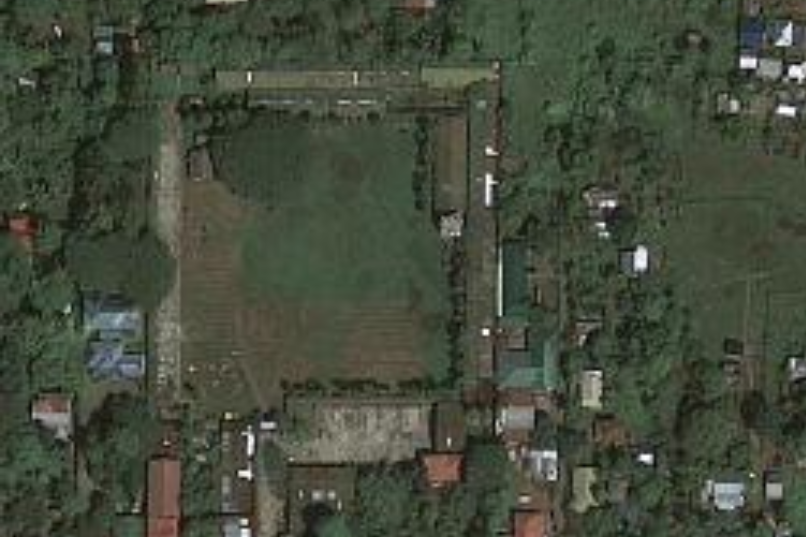
Palawan Polytechnic College (1979)
The college was established by Atty. Sinforriano B. Alterado on November 19, 1979.
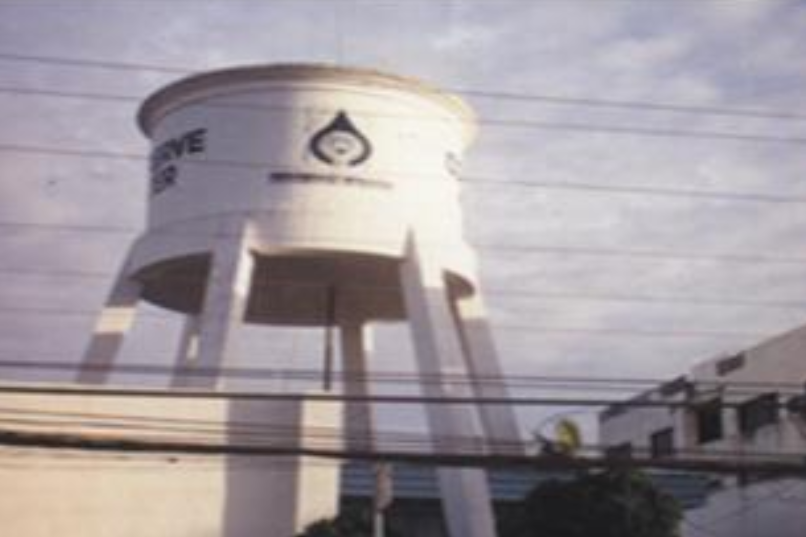
The City Water District
Since its establishment, Puerto Princesa was faced with lack of potable water supply.
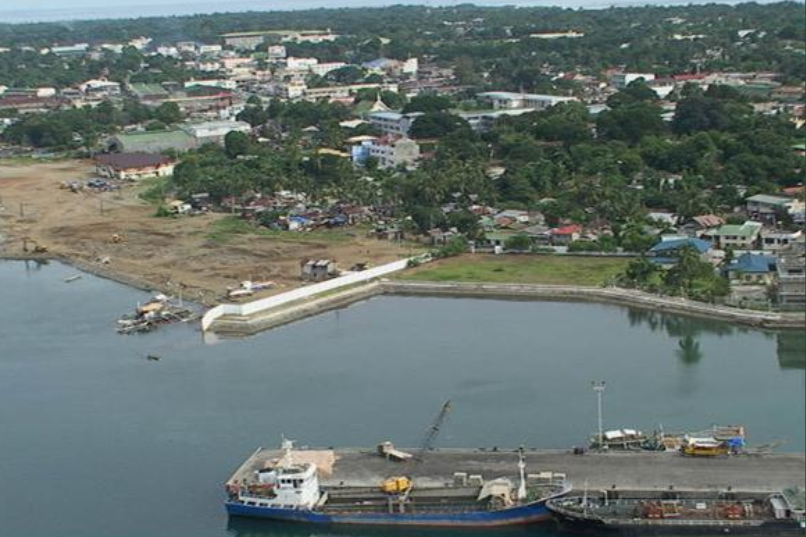
The Philippine Port Authority
The Port of Puerto Princesa has a rich history. In its early years, Chinese and Muslim traders came to Puerto Princesa
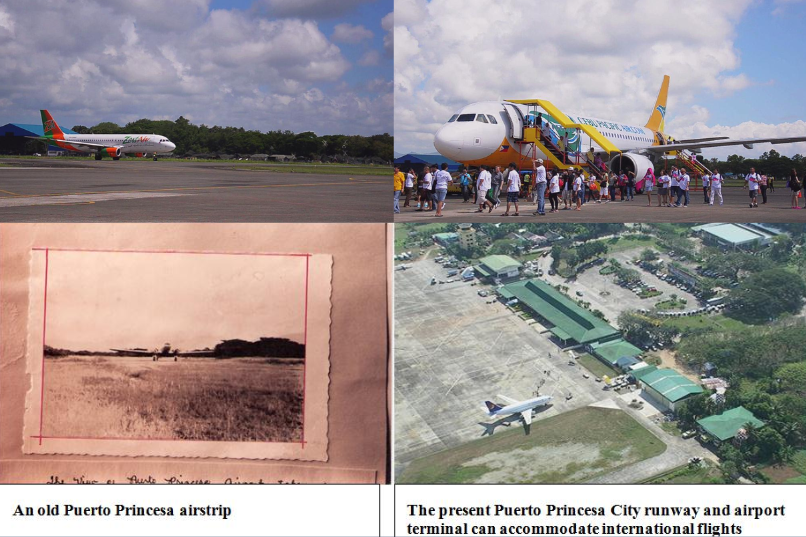
Airport Terminal & Air Navigation Facilities
The original airstrip of the present airport was constructed during the Japanese occupation
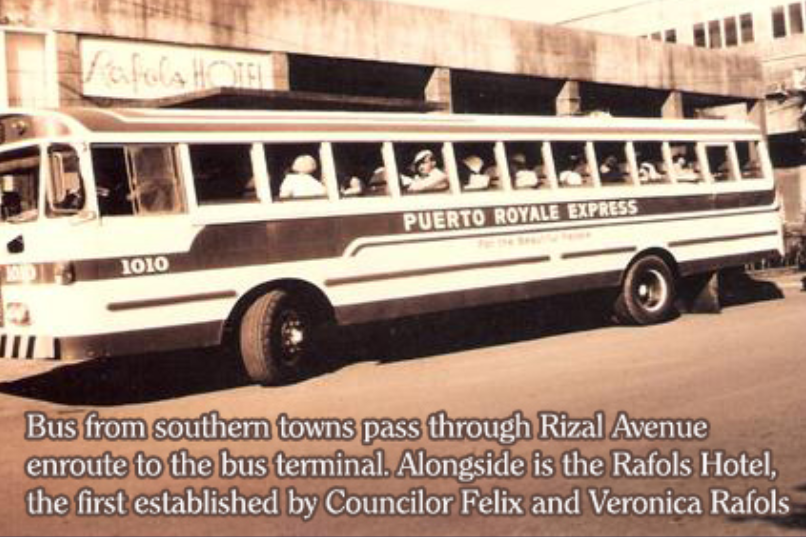
Road Network
The City is connected by two national roads, the Puerto Princesa South Road
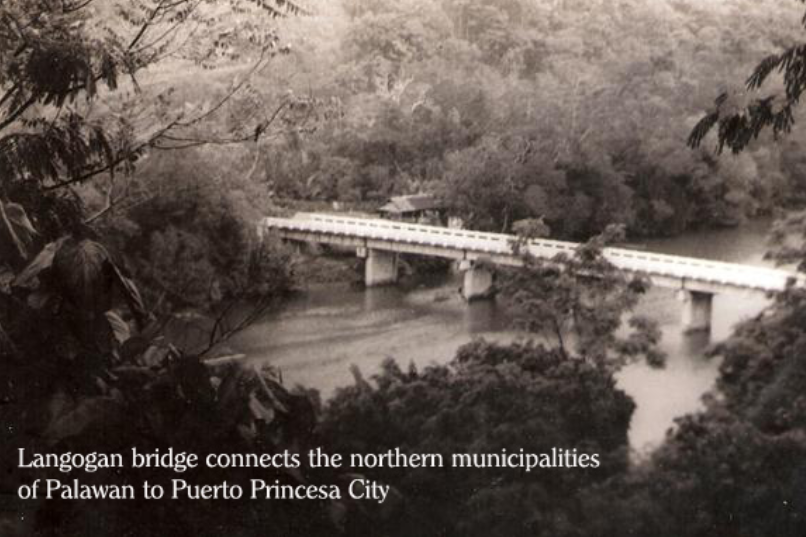
Bridges
There are 57 national bridges in the City with a total of 1,378.45 meters
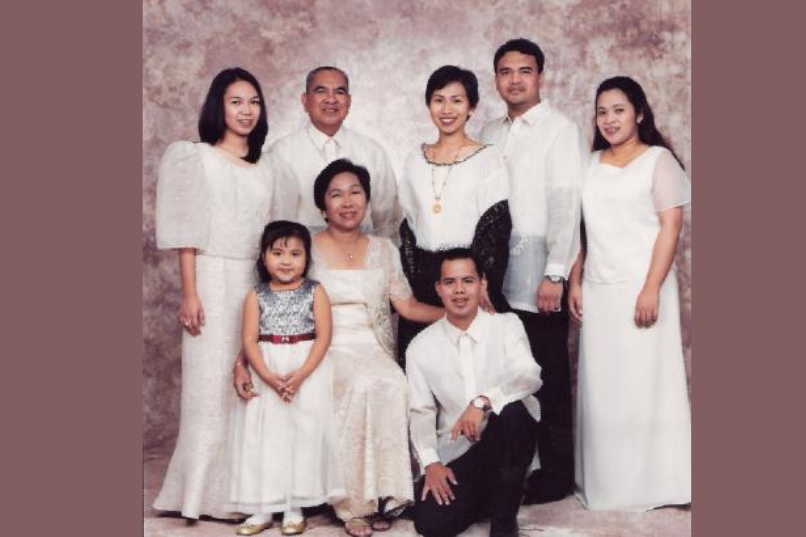
Alfredo E. Abueg Jr.
On March 3 1986, President Corazon C. Aquino appointed Alfredo Abueg, Jr.
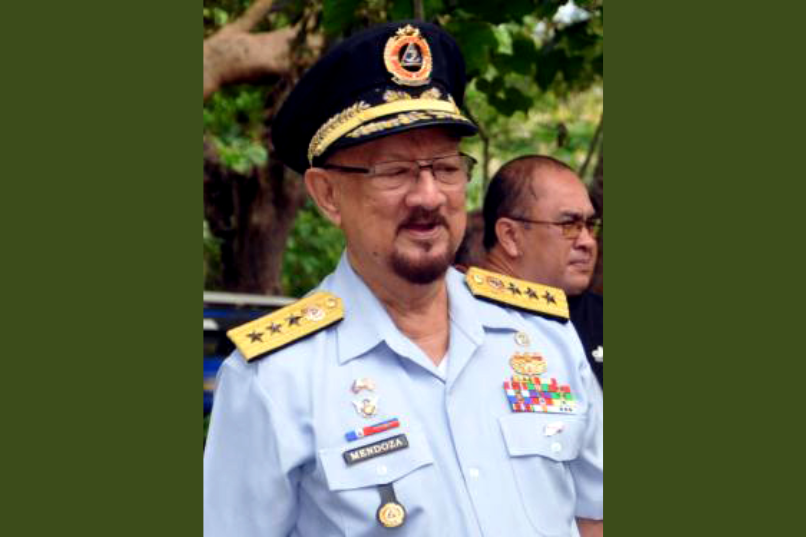
Higinio C. Mendoza & Feliberto Oliveros
Higinio Clark Mendoza, Jr. replaced OIC Mayor Alfredo Abueg, Jr.
